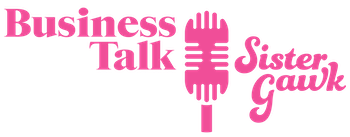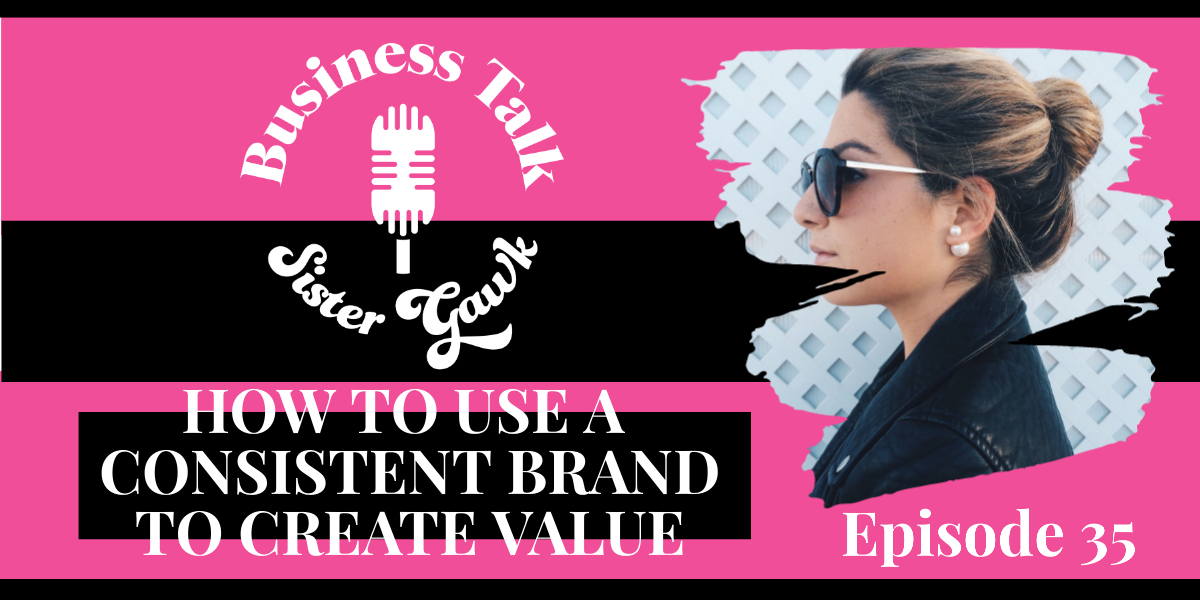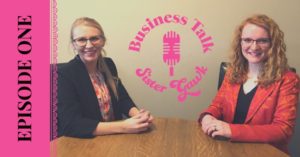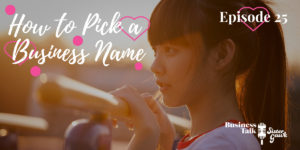This week, we are digging into how to be consistent in your business brand representation. We’re giving you tips to keep the same tone and voice, with a fun discussion about some brands that have consistently snarky tone. Your business will thank you for staying true to your values when you keep it consistent.
Bekkah: Last week we were discussing why a brand has value. So, now we’re going to talk about how you can start creating value with consistency in your own brand. We talked a little bit about how that creates value but what overall is the purpose of branding?
Ruthie: The overall purpose of consistency is so that it doesn’t detract from those things. So you’re just kind of creating that same voice and that was a quote from Marketing91 and I feel like maybe it’s actually “Marketing 9-1-1” and I just wrote “Marketing 9-1” *It’s not “Marketing 911″… I was just confusing myself…* but anyway! It’s so that it “does not detract away from the core values, brand strategy, fundamentals, and foundation of the brand.”
Your Business Brand Includes Logos, Colors, Posts, The Types of Content & Products
That can be anything from the tone of the brand, the consistency of the logo, the brand colors, the frequency in which you post, the type of content that you post, the type of things that you are distributing out to the world, the type of product that you use, the quality of the product that you use. Like all of that is considered your brand or your reputation. All of that is kind of encompassed um but why should you keep your brand’s tone and personality consistent across all channels, Bekkah?
It’s Important to Maintain The Same Voice & Style on Different Social Platforms
Bekkah: Oh, because it’s important to help people understand who you are. If you use a brand that is very just straight and no-nonsense on one platform and then you get way off on the other end of just crazy and disjointed on another platform – say like you’re super professional on LinkedIn and then everything on Facebook is like completely different. It’s hard for people to be like, “Is the same person? Is this the same company?” So it’s important to keep that tone similar.
Now I would say that that would be the extreme. I do think that it’s important to be a little bit more professional on LinkedIn than it is on Facebook, because Facebook is more for social sharing and fun but the tone needs to be the same in terms of the personality. You can’t just be bipolar brands right because that consistency develops trust a lot of times. Especially when you’re working with people and they’ve never heard of you before one of the very first things they’re going to do is go look up your website or your Facebook page and figure out what you’re all about.
Communicate Clearly What You Are Trying to Sell With Your Business
Commonly what happens after that is they scroll through your pictures because they want to see who you are. When that’s happening, if you have really inconsistent information about what you do or what you’re sharing, what you’re selling, or whatever, they’re gonna have an unclear picture of how you can bring value to them. I know Ruthie was talking a little bit about this when we originally talked about making an episode on consistent branding. She was like, “Oh, yeah, somebody just did that recently. They did an entire rebrand and it totally threw me off!” You’re gonna have to tell me about that because I don’t know who you were talking about.
Be Careful How You Approach Rebranding Your Business
Ruthie: Thrivent Financial. Love them. They’re very good. I like them and have used them for many years now with my different investments and things like that. They went through a rebrand and then I kept getting all these emails. It was like, “Straight to trash. Straight to trash. Straight to trash.” Then I saw that I got a letter in the mail that was like, “Hey, we’re going through a rebrand!” And I was like, “Oh, no!” I was like, “Man! I thought that was all spam!” I literally didn’t even read the emails! I was just like, “That’s not Thrivent’s branding.” I just threw in the trash. Then I had to go back through and do a little recon but I just thought that was a good way of going about it and, yes, I was a little uh… ignorant to it, but they went through the processes that they needed to inform people and I think that’s something that Facebook does a lot.
Every time they rebrand, first of all it’s not a drastic rebrand. It’s maybe like a shade different in their coloring that they use or whatever and then they’ll use like a slightly different logo, but then they talk about it a ton. They say, “We’re trying a new look or we’re laying out this differently.” Or whatever and obviously Facebook can kind of get away with things like that more because you’re always going to know what Facebook is, but for your company when you think about if you have had the same logo for a long time and you’re like, “Let’s do a massive overhaul and change up everything! Change up our entire website!”
Just be really strategic in how you go about that, because if all of a sudden your customers are really used to going to your website and the whole thing is a black one page website and suddenly you’re like, “Oh, we should probably make our website look a little bit better.” And you make it into really colorful. There are lots of pictures. There are multiple pages and you just did this entirely new thing someone’s going to go to your site and be like, “This is not the right one!” and then probably leave.
Notify Your Customers If Your Business Is Going Through a Rebranding
If you do a massive rebrand or something like that or you get a new website it’s important to note that on your website. Like “Hey, we are brand new!” Or maybe even include a screenshot of your old site! I’ve seen people do that before. “This is our old site check out our new fresh look!” or whatever. Really make sure that you’re engaging those people who are like, “What did I just stumble upon? Is this the same company?” And then the same thing with your logo too putting that across your Facebook channels before you even overhaul everything.
This is our new logo and this is when we’re going to change it. Kind of building that so that if you add a new logo to your Facebook page and people come to your page then they see all that content that you’ve been submitting in saying, “We’re changing this. We’re changing this. We’re doing whatever!” And another thing that I was gonna say, too, about consistency in voice, that’s why it’s really important to either 1. Have your whole team on the same page. I know we’ve talked about brand manuals before.
Understand The Importance of Managing All Your Brand Channels in The Beginning
Well, 1. You should have a really good brand manual which is very inclusive that’s got all of your colors, your logos, your style, your type of photos that you want, any filters that you use, any font that you use. Have that all included in your brand manual. Then number 2, what I would recommend is having – I mean this kind of varies from company to company so take this with a grain of salt -but it might be a good idea to have only one person running your marketing channels.
Then obviously as you get bigger you kind of need to expand that but especially when you first start out that one person is going to know the ins and outs of all the different things that they’ve posted and all the different things that they’ve been curating this whole time. *Bekkah starts laughing* So it’s a good idea to kind of have one person head that up. Especially to begin with so they can kind of get their vibe and get into, “This is what we’re going towards as a company and this is what we want to be consistently.” Then other people can jump on that. Why are you laughing!?
Bekkah: Okay I’m laughing because you’re like, “Have one person manage all of your channels.” Okay so like we decided, “You know, we’re going to be a little trusting and let our sister Mia start posting our Instagram.”
Ruthie: Our youngest sister.
Bekkah: She has our Instagram access and one day I kid you not! First of all, this is partially my fault because I did not go over a brand manual with her. I was just like, “Well, just take pictures and stuff and send it to me and I’ll let you know if it’s okay to post!” But she took that as “I should take pictures of stuff and post it to the Instagram account and then let you know that it’s posted.” She literally texts me and she’s like, “Hey, I found this dead bumblebee!I took a picture of it and posted it on the Businesstalksistergawk Instagram!” And then literally the caption was “dead bug”. I was like, “Oh, no…”
Ruthie: “Okay. Take that down. Thank you… Thank you for that…”
Bekkah: “Um… that’s not part of the brand… that doesn’t have anything to do with business or us as sisters.” It was so funny! And I just immediately went there took it down and was like, “Okay, um… we need to re-strategize how we go about this.”
Ruthie: Someone else that I think does a really good job with tone of things, this was something – Oh! Our intern, Darby, amazing! She’s the best! We went to Glensheen Mansion together in Duluth. Whoever does –
Bekkah: You guys had a work party without me?
Ruthie: Oh, yeah. It’s pretty easy to do there are three people! We went to Glensheen and whoever writes their little signs and stuff -hilarious! They’re so funny! They’re just super snarky! They do different themes every now and then like Christmas they’ll do the elf on the shelf thing and then you go through and you have to find the different elves or whatever that are hidden all over the place. We didn’t go inside it was like an outdoor, nighttime thing. Anyway, for some reason now it’s sharks. That’s the thing. *Bekkah laughs* So there’s little it’s –
Bekkah: It’s on lake superior! There are no sharks!
Ruthie: Exactly yeah! Anyway, so there are all these different sharks hidden all over the place but there was this massive shark that’s made of wood and it’s all like nailed together and everything like that and it looks – it’s decently tasteful but it’s like in the backyard of Glensheen Mansion. This historic estate and in the sign it says, “This shark is not a part of the original estate.” But the person who wrote it was like snarky about it because all the others had that theme consistently. There was one where they had this massive metal structure or whatever that apparently was like used for fixing different things. You basically sit inside it and it was propelled by a crane and it would take you straight to the bottom of any water. I was like, “That’s a good way to die!”
Bekkah: Got my foot stuck under that one!
Ruthie: Yeah, seriously! Anyway it was like, “This was discovered by so-and-so” or something like that. It was like, “It was in the bottom of Lake Superior,” and then it was something like, “Clearly it is now not in the bottom Lake Superior” or something like that. Just little things that were not aggressively funny but like, “Oh, cute!” And then their website and stuff too is like that! We’ll put a link to their website. There’s some like snarky, fun stuff on their website, too. But they’re consistent in their voice and they’re consistent in how they kind of play around with that. And, honestly, it’s a whole bunch of like UMD, college students that are running a lot of their marketing. So alright.
Bekkah: That’s probably why!
Ruthie: Run with it. A bunch of history majors that work there.
Bekkah: I could imagine and maybe a couple librarians, too. You know, librarian majors. They’re so snarky! I love them! If you ever search the #LibrariansOfInstagram and you just start reading their posts you were gonna meet a whole different world of brand tone! Snarky bran tone!
Wendy’s Brand Manual Tone Example
Ruthie: Yeah tell us about the brand tone of Wendy’s, their Tweets and stuff like that.
Bekkah: Yeah! So Wendy’s is known for just being ridiculously snarky!
Ruthie: Just roasting people!
Bekkah: I don’t even remember if this is – I think there was a time where they actually had like public roasts where it was like, “Please roast me.” And then the brand person for Wendy’s was actually intentionally roasting people that requested it. Ayways, they do a lot of stuff on purpose to like almost like sling hash at other fast food brands.
Ruthie: Yeah! It’s so good!
Bekkah: It’s so funny in how they do it like they kind of play off each other sometimes. You should definitely check out their stuff. But the thing is they were like, “We need this.” And they decided to go with that because their branding is a little girl, right? This little redheaded girl on their logo and somebody actually started like posting stuff that they were like, “Oh my goodness! This person needs to be our brand tone!” And they actually reached out to that lady and asked her to start running all of their Twitter comments and stuff. Which was hilarious and I think she’s still doing it!
Ruthie: Good.
Bekkah: So thinking about brand tone, when Ruthie was like, “Have someone be in charge of it, it’s important to think about your core values first. One of the very first episodes – I think it was the first episode we ever did was talking about your core values.
Ruthie: Yeah.
Bekkah: If you don’t have those down it’s really going to be hard to have consistent branding. Part of brand consistency is also knowing “this is what I do” and then choosing to show up at things that are similar in terms of if you’re going to go someplace be represented or whatever showing up on brand. And that even goes into your personal brand what you look like. There are a whole lot of elements of people who are willing to pay more.
I just actually was writing an article or somebody asked me to contribute to an article for a construction magazine or whatever recently and they said, “Hey, does it matter what you look like professionally as a contractor?” I’m like, “Well, absolutely! If you have a crew that has all of the same outfits on every single day and they look professional, when somebody calls you for a quote and you say, ‘This is my price’ and it’s significantly higher than a competitor they’re not going to question it because they see your professionalism and they’re paying for quality.”
That’s the psychology aspect of it. How you look and present yourself is part of your brand and that also applies to why so many companies have all of these dress code policies. I mean can you imagine back in the day when all of these baby boomers just had a fit when people didn’t want to wear suits to the office? And now it’s like, “Can you please just not wear yoga pants every day!?”
Ruthie: Seriously!
Have Consistent Brand Terms & Colors for Your Business
Bekkah: We’ve come a long way in our branding shaping what we need to look like at work. But know that that’s part of your brand. Whatever your logo is or whatever you say this is what I’m saying my business is about how are you reflecting that in how you act and in what you’re saying in the terminology that you’re using. Even about what you call your customers. Are they clients? Are they buyers?
Try to find out what those terms are that you use all the time so that if you do have to hand off your marketing it’s going to be a lot easier to have a consistent brand and you don’t have to monitor every single post because you’ve got somebody that is is well versed and familiar with who you are and what you stand for. They know your industry and then they can speak exactly to the things that you’ve been wanting to educate people about.
Ruthie: Yeah and I think that kind of also goes with when you were talking about with consistency in even apparel and things like that. You can be professional but also be casual. I was thinking about one time one of my mentors in high school was just laughing about kids these days and how they don’t know what they should be wearing and he was like, “Ruthie, I once had an 18-year-old guy ask me if he can wear shorts to the office?” And I just like stared at him and I was like, “CAN you wear shorts to the office!?” And I was just thinking about that. And then he was like, “Ruthie, you cannot wear shorts to the office!” And I was like, “Okay! Duly noted! You can’t wear shorts to the office!”
Those kind of things are important to know as a company. Know the place that you’re applying for if you’re gonna do that as a job and if you are an employer if you’re a small business be open about those things with your employees so that they’re aware and so it doesn’t have to be an awkward conversation later. You just say, “This is our brand. This is who we are. This is the kind of apparel that we wear to the office and this is why.”
Bekkah: Oh my actually, recently talked with somebody that was a sales person and was trying to sell to a pretty big company and he had a – oh those cute little hats! I’m trying to remember the name of them. They’re newsboy caps!
Ruthie: Ooh yeah!
Bekkah: He was adorable. He was probably like, I don’t know maybe in his 60s, but he’s telling me that one day he showed up to a CEO’s office wearing his newsboy cap to talk to them about a new project that they were going to build for them whatever and he was like telling me how upset he was because the man literally said at the end of the meeting, “If you ever show up to my office again wearing a hat you will be kicked out and you will never have business with us again.”
And I was like, “Whoa!” He was like, “Yeah! That was at the start of my career! I was just shocked!” And I was thinking about that like, “Wow! How intense is that!?” But also think about how you’re branding. How you dress, not just for yourself, and what you represent, but you dress for how you want to get the business that you want.
Ruthie: Yeah, that’s a good point.




